Your browser does not fully support modern features. Please upgrade for a smoother experience.

Submitted Successfully!
Thank you for your contribution! You can also upload a video entry or images related to this topic.
For video creation, please contact our Academic Video Service.
| Version | Summary | Created by | Modification | Content Size | Created at | Operation |
|---|---|---|---|---|---|---|
| 1 | Dimitris Mourtzis | -- | 2977 | 2022-09-06 17:29:03 | | | |
| 2 | Camila Xu | + 1 word(s) | 2978 | 2022-09-07 02:50:33 | | |
Video Upload Options
We provide professional Academic Video Service to translate complex research into visually appealing presentations. Would you like to try it?
Cite
If you have any further questions, please contact Encyclopedia Editorial Office.
Mourtzis, D.; Angelopoulos, J.; Panopoulos, N. Transition from Industry 4.0 to Society 5.0. Encyclopedia. Available online: https://encyclopedia.pub/entry/26927 (accessed on 13 January 2026).
Mourtzis D, Angelopoulos J, Panopoulos N. Transition from Industry 4.0 to Society 5.0. Encyclopedia. Available at: https://encyclopedia.pub/entry/26927. Accessed January 13, 2026.
Mourtzis, Dimitris, John Angelopoulos, Nikos Panopoulos. "Transition from Industry 4.0 to Society 5.0" Encyclopedia, https://encyclopedia.pub/entry/26927 (accessed January 13, 2026).
Mourtzis, D., Angelopoulos, J., & Panopoulos, N. (2022, September 06). Transition from Industry 4.0 to Society 5.0. In Encyclopedia. https://encyclopedia.pub/entry/26927
Mourtzis, Dimitris, et al. "Transition from Industry 4.0 to Society 5.0." Encyclopedia. Web. 06 September, 2022.
Copy Citation
In the era of Industry 4.0, manufacturing and production systems were revolutionized by increasing operational efficiency and developing and implementing new business models, services, and products. Several countries have begun orchestrating initiatives towards the design and development of the human-centric aspect of technologies, systems, and services, which has been coined as Industry 5.0. The impact of Industry 5.0 will extend to societal transformation, which eventually leads to the generation of a new society, the Society 5.0.
Industry 5.0
Society 5.0
human-centricity
Industry 4.0
Manufacturing
1. Introduction
Humankind through the years has recognized the potential of using technology as a medium for advancement since the first Industrial Revolution (Industry 1.0). The First Industrial Revolution, which can be traced back to the end of eighteenth (18th) century (i.e., 1780s), began with the production of mechanical power using primitive resources, such as water, steam, and fossil fuels. In the 1870s, manufacturers who used assembly lines and mass production favored electrical energy during the second such revolution (Industry 2.0). During the Third Industrial Revolution (Industry 3.0), in the 1970s, the concept of integrating automation to production industries was introduced through the utilization of electronics and Information Technologies (IT). The Internet of Things (IoT) and cloud computing in conjunction with Artificial Intelligence (AI) are used in the fourth phase of the industrial revolution (Industry 4.0) in order to facilitate the realization of Smart Cyber–Physical Systems (CPS), which serve as a real-time interface between the virtual and physical worlds [1][2]. The technologically driven industrial revolution known as Industry 4.0 (I4.0) conceptualizes the recent decade’s rapid change in technology, industries, and societal patterns and processes. With the emergence and advancement of pillar technologies such as big data analytics, AI, and digital twins, production efficiency and improved product and service quality are promoted under the framework of I4.0 [3]. Despite the advances and the opportunities unveiled under the framework of I4.0, there are certain limitations, since in I4.0 engineers have mainly focused on the technological evolution of manufacturing and production systems and networks (digitization and digitalization) by prioritizing industrial flexibility and efficiency over industrial sustainability and worker welfare [4]. Consequently, the dawn of a new era for industrial transformation lies in the near future. This new era will enable engineers to fully utilize the current technological landscape to benefit humankind as well as to socialize factories (see Social Factories). Currently, several countries, among them the European Union, Japan, and the USA, have moved towards the establishment of the above-mentioned human-centric era, commonly known as Industry 5.0, a term extending to Society 5.0 as well. At this point, it has to be stressed that I4.0 is an ongoing technological evolution, and Society 5.0 (including Industry 5.0) is still under preparation, thus creating a misconception that Industry 5.0 will not be considered as an independent industrial revolution.
1.1. Industry 5.0
As such, even though Industry 4.0 has not been fully integrated worldwide, many business innovators and technological pioneers are already looking ahead to the Fifth Industrial Revolution or Industry 5.0 (I5.0) [5], which will involve autonomous manufacturing with human intelligence and AI as a backbone technology, in and on the loop (see Figure 1). Additionally, by 2027, it is predicted that the number of social media users (4.59 billion in 2022) will significantly increase to 5.85 billion, following the rapid growth of the Internet, and Internet-related technologies [6].
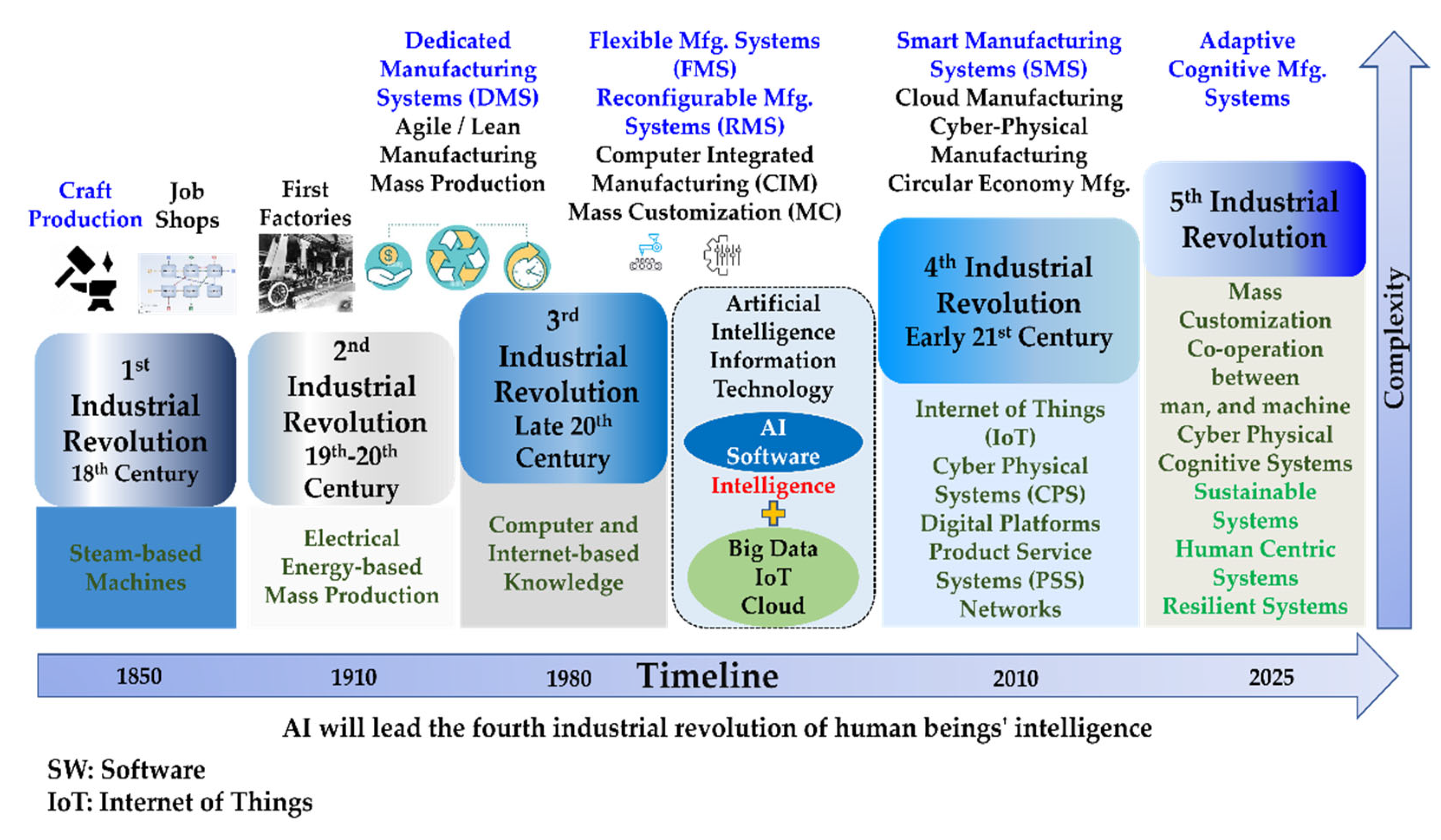
1.2. Society 5.0
As a human-centric design solution where humans and cobots collaborate in a shared working environment, I5.0 [9] has constantly gained more attention during the last years, aiming to address the challenges exposed by Industry 4.0. Moreover, a similar concept named Society 5.0 (S5.0) [10] comes into view in these years to solve the problems in current society, which is a futuristic super-smart society in which everyone can enjoy high-quality and comfortable lives through the fusion of cyberspace and physical space by fully utilizing ICT (Information and Communication Technology). The plan is the Japanese government’s response to other socio-technological plans such as Made in China 2025 and I4.0 in China and Europe, respectively. Similarly, I5.0 is directly related to S5.0, and both will happen when AI is trained to think and lead organizational processes independently, which is predicted to happen in 2030 [10]. It is anticipated that human and technological relationships will continue to evolve in Society 5.0 through the CPS developed in I4.0 [11].
In order to ensure sustainable development in all societal aspects (e.g., education, health, democracy, and economy), it is important for people to have positive relationships with technology [12]. On the other hand, this issue raises the question of whether AI will have a negative impact on human society (e.g., job loss, ethical and practical concerns regarding the transfer of responsibility from people to machines, social control, and algorithmic errors, among others) [13].
2. Definitions of Industry 5.0
In order to provide the required context for the discussion of Society 5.0 and its aspects in the following section, the most pertinent definitions for Industry 5.0 are provided in this section.
The first definition is derived from the research work of (Breque et al., 20210. According to the researchers, Industry 5.0 is a thoughtful concept that looks to the future of industry in the direction of a manufacturing system that is human-centric, sustainable, and resilient (Breque et al., 2021). With adaptable and flexible technologies, I5.0 is quick to act, resilient, and respects the limits of the planet while fostering talent, diversity, and empowerment [14].
Similarly, according to Michael Rada, the Industry 5.0 organization’s founder and leader, Industry 5.0 is the first industrial evolution to be driven by a human and is based on the 6R principles of industrial upcycling (Recognize, Reconsider, Realize, Reduce, Reuse, and Recycle), a methodical waste prevention technique and logistics efficiency designed to evaluate life standards, innovative creations, and produce high-quality custom products [15].
The third definition is provided by [8], stating that in the factory, the workforce and machines work together to increase process efficiency by utilizing human creativity and brainpower through the integration of workflows with intelligent systems.
According to Friedman and Hendry [16], I5.0 is expected to force business professionals, information technologists, and philosophers to concentrate on human factors when implementing new technologies in industrial systems.
Industry 5.0 is the era of the socially intelligent factory, in which cobots converse with people. Enterprise social networks are used by the Social Smart Factory to facilitate seamless communication between human and CPPS components [17].
Considering the definitions provided above, it becomes apparent that all of them converge on the aspects of human-centricity, system resiliency, and sustainability. A further interpretation of the definitions reveals some differences, as in the majority of the definitions of Industry 5.0 entail an entire era of technological and societal advances, whereas the rest of them focus more on the industrial transformation.
3. Definitions of Society 5.0
Following the concept of the previous section, in the current section, the most pertinent definitions for Society 5.0 will be discussed. Before diving into the definition of Society 5.0, in Figure 2, the societal revolutions were compiled based on the key aspects. Society, in parallel with Industry, has evolved. Taking into consideration the evolution of industry through its revolutions (as discussed in Section 1), the resemblance with society becomes evident. Consequently, the concept of Society 5.0 is a superset of what is known and conceived of so far as Industry 4.0.
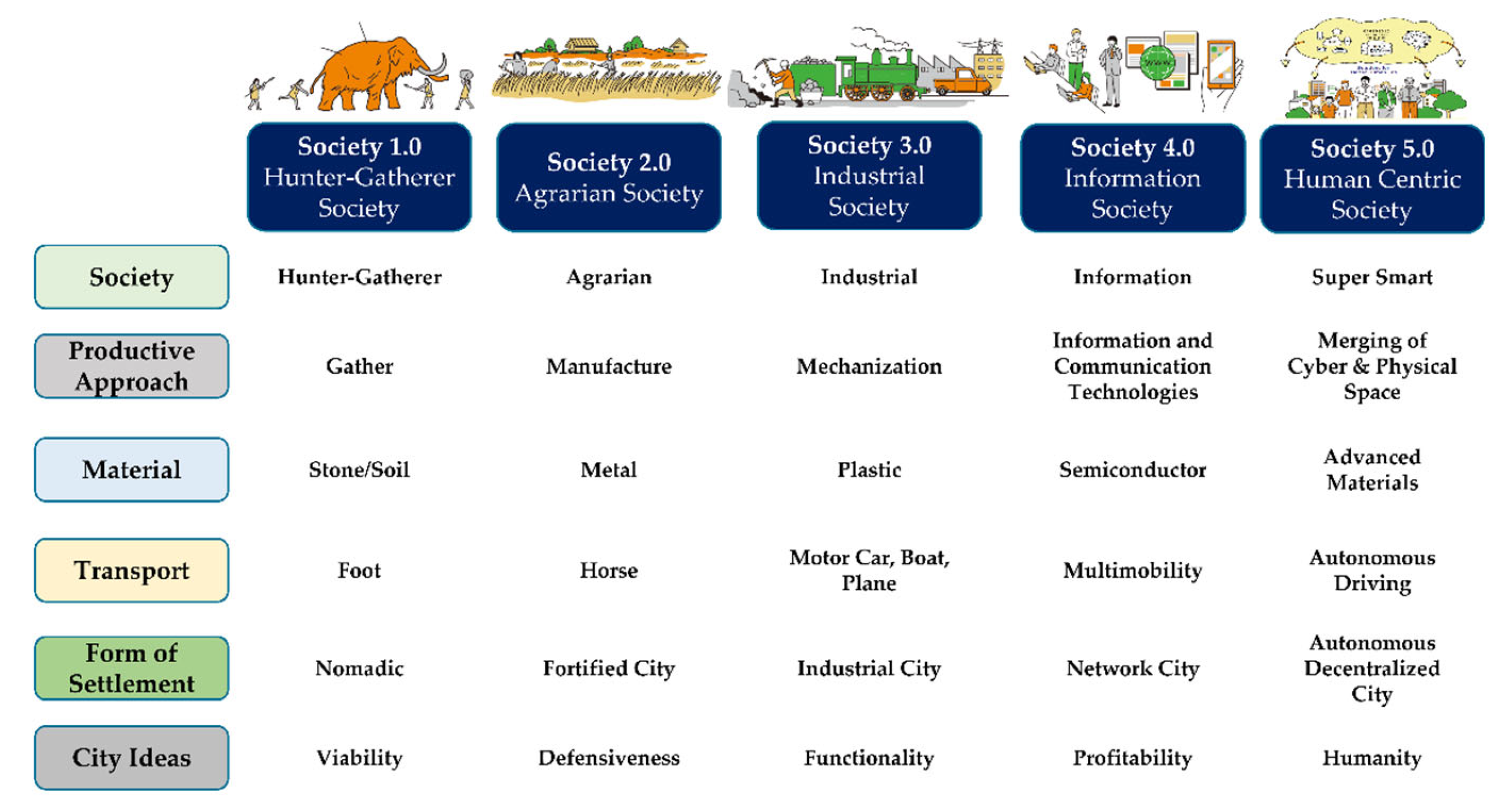
Figure 2. Societal evolutions categorized in key aspects.
The Japanese government in 2015 referred, for the first time, to their vision of a human-centered society, “Society 5.0”, as one in which a high degree of cyberspace and physical space integration can foster economic growth and address social problems, as a response to the challenges to the Japanese economy [18]. The biggest issues facing society today are an aging and shrinking working population, increased global competition necessitating infrastructure upgrades, natural disasters, terrorism, environmental issues, and lack of natural resources. This strategy is used in Granrath research on Japan’s Society 5.0 and moving beyond Industry 4.0 from 2017 [19].
According to Serpa (in MDPI encyclopedia) [20], Society 5.0 can be realized as a concept and a guide for social development, with a profound impact on current societal structures in multiple levels. The key to the societal development will be the improvement of humans’ quality of life and environmental sustainability through the adoption of the Smart Society paradigm.
Deguchi et al., in their book [21], define Society 5.0 as a highly intelligent society based on generation, processing, exchange of data, and more specifically knowledge, through the connection of the physical environment with the cyberspace.
In the same context, Rojas et al., in 2021 [22], following the definition of the Japanese government, define Society 5.0 as a “Superintelligent Society”, taking advantage of the technological advances gained during Industry 4.0 for the greater societal good and environmental sustainability.
4. From Traditional Society to Industry 4.0 and Society 4.0
The development of the transistor and the microprocessor served as the foundation for the third industrial revolution (1960). These developments made it possible for the advancement of computer and communications technology to happen more quickly, and the automation of processes started. As a result, society started to transition from making goods and profit to becoming a post-industrial society based on knowledge production and the expansion of service industries. The post-industrial or information society, which focuses on the organization of knowledge and acts as social control, guiding innovation and change, underwent a shift in the 1980s with the advent of digitalization [23]. A global information society that aims to provide access to the Internet, better education, business support, and networking was exposed as a result of the development of the Internet. Since the existing information societies are based on a capitalist system, it is also important to highlight the institutional and cultural diversity of information systems (such as the distinctions between various countries and nations). Additionally, the modern information society is built on cutting-edge technological innovations for processing data and creating new knowledge. The information age has put a lot of emphasis on gathering and processing data at various stages. The traditional society is going through a rapid structural change as a result of the Fourth Industrial Revolution, as illustrated in Figure 3. An advanced AI system will be used to analyze and process vast amounts of data that are gathered by devices and sensors dispersed throughout the physical world. The activities of people and machines in physical space are then significantly impacted by the analysis. Cyberspace and the real world are becoming increasingly integrated. As a result, universities should focus on current career development, skills cultivation, and collaborative relationships [24]. Thus, it can be stressed that society is a specific type of social organization in which the collection, processing, and transmission of information become the main sources of power and productivity.
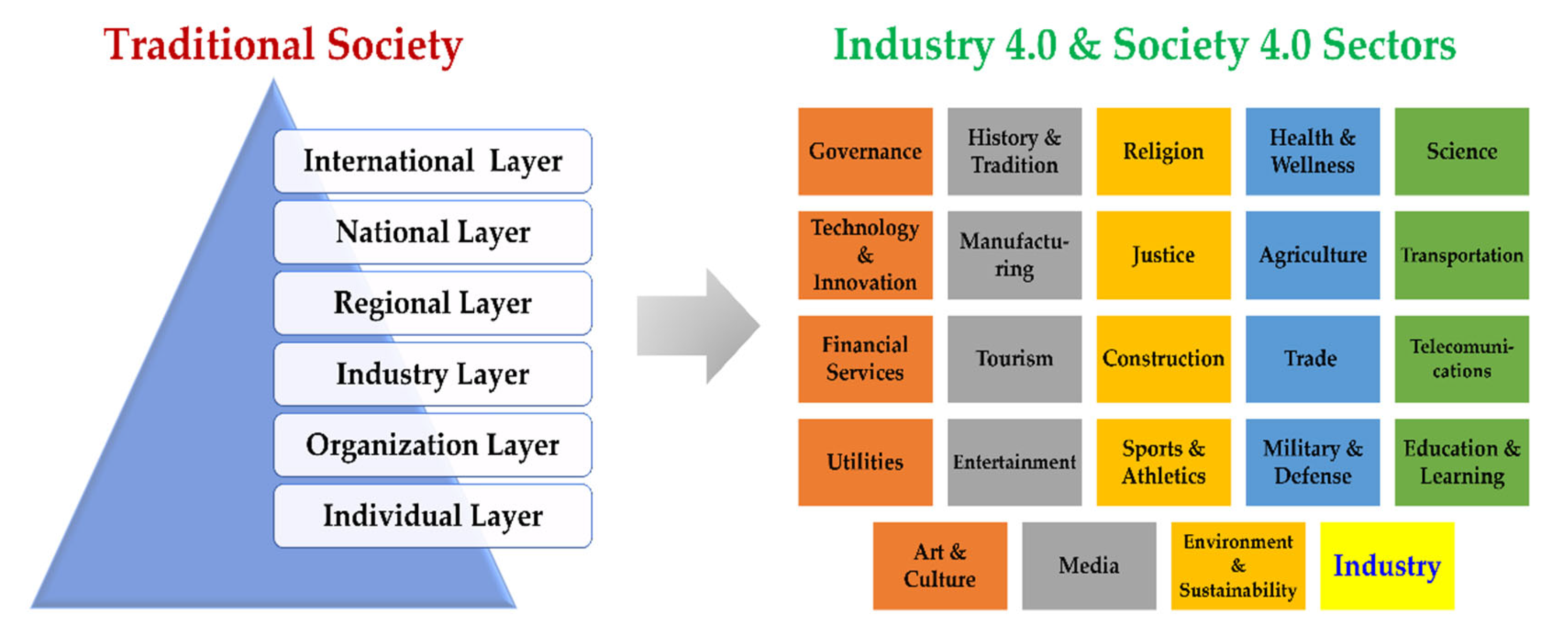
Figure 3. From Traditional Society to Society 4.0.
5. Sustainable Concept of Society 5.0
Society 5.0 is a paradigm for sustainable development at all scales, although this model was developed for Japan, it and its components can be applied to any other nation. Therefore, it is essential to concentrate on the aspects of the concept that are connected to the growth of industry within the context of adapting it. The Industry 4.0 strategy has primarily been used by Europeans for a long time, but it only focuses on production. In contrast, Society 5.0 also deals with the social sphere. Therefore, researchers could use specifically those components of the Japanese concept that are intended to modernize other social processes unrelated to the industrial sector [25].
In order to solve social problems and coexist with nature, Society 5.0 aims to use the potential of the digital transformation in addition to promoting economic growth. The UN Sustainable Development Goals (SDGs) [26] can be achieved with its assistance. Therefore, a specific vision for the society, which is referred to as “Society 5.0 for SDGs”, is presented in Figure 4.

Figure 4. Society 5.0 for Sustainable Development Goals.
The Keidanren will continue to develop this idea going forward and take the initiative to implement it, changing the Japanese economy and society in the process [27]. Society 5.0 will significantly alter social norms and business practices. People will be able to lead a variety of lifestyles thanks to close partnerships that cross borders and industries as well as the transformation of existing industries. The goal of S5.0 is to give everyone the freedom to pursue their own happiness and lifestyles while also playing a role in achieving sustainable development that is in tune with nature by resolving social issues. This is consistent with the SDGs which were adopted by the UN to address global issues and build sustainable societies. Many of the SDGs require S5.0, but it is insufficient on its own. While some objectives can be directly achieved by creating S5.0, others will profit from various solutions created on the foundation of S5.0. The concept of S5.0 for SDGs will be realized, as S5.0 encourages innovative problem solving from a variety of perspectives and supports these solutions with digital transformation. In order to achieve S5.0, this section lays out the direction for sector-specific reforms, including contributions to achieving SDGs.
6. Digital Transformation
By fusing Digital Transformation (DX) with the imagination and creativity of a wide range of people to create values and find solutions to problems, the new Society 5.0 (Creative Society) will be a society that researchers will design itself. The idea of using DX to create a society for the future is crucial. The development of S5.0 is being triggered by the ongoing DX, which refers to the fundamental transformation of society as a result of advances in digital technology and data use, including profound changes to individual lives, government operations, the structure of the economy, and employment.
Different types of manufacturing innovation are sparked as large-scale data collection, transmission, storage, and analysis are made possible at low cost [28]. Data makes problems more visible and offers potential fixes. When such information and insights are instantly shared globally, management and social problems can be solved. The Internet of things (IoT), AI, 5G, robotics, and blockchains are examples of data-based technologies that are used in DX to bring about fundamental changes in society [29][30].
The change provoked by DX is not merely technological. It represents a significant shift in the lower level of society and culture, altering social norms. DX goes beyond straightforward labor-saving “kaizen”, automation, increased productivity, and digital technology-based optimization. In response to significant social changes, DX is reform that aims to establish new values, sometimes at the expense of preexisting ones. Therefore, it can be stressed that DX is a shift that alters the foundation of society and business, going beyond simple IT system modifications. Consequently, DX should be the top management priority for businesses, and they should work on it voluntarily and pro-actively [31]. The definition of DX in the Keidanren proposal is as follows:
“Fundamental and revolutionary changes in society, industry, and life as a result of advances in the use of digital technology and data; and radical changes implemented by industries, organizations, and individuals toward such transformation.”
7. The Nature of Society 5.0
Digital technologies and data should be used to create a society where people can pursue different lifestyles and types of happiness in their own ways, even though digital transformation ushers in a new stage of society. Although Society 5.0 was first described as a “super smart society” in the 5th Science and Technology Basic Plan, that is only one aspect of the new society [32][33]. Anyone can access advanced “abilities” thanks to digital transformation, as mentioned above. People can conduct activities and business that have the potential to significantly alter society if they have ambition and ideas.
Rich imaginations will be necessary for Society 5.0 in order to recognize the various needs and problems that exist throughout society and create scenarios to address them, as well as creativity in order to implement solutions that make use of digital technologies and data. Combining digital transformation with the imagination and creativity of various people will make it easier to solve problems and create value, which will pave the way for a better future.
Furthermore, in order to solve social issues and add value, Society 5.0 will be a Creative Society where digital transformation combines with the imagination and creativity of diverse people. Thus, in order to enable sustainable development, humans will use their imagination in Society 5.0 to find ways to symbiotically co-exist with nature and technology as well as with themselves, as presented in Figure 5.
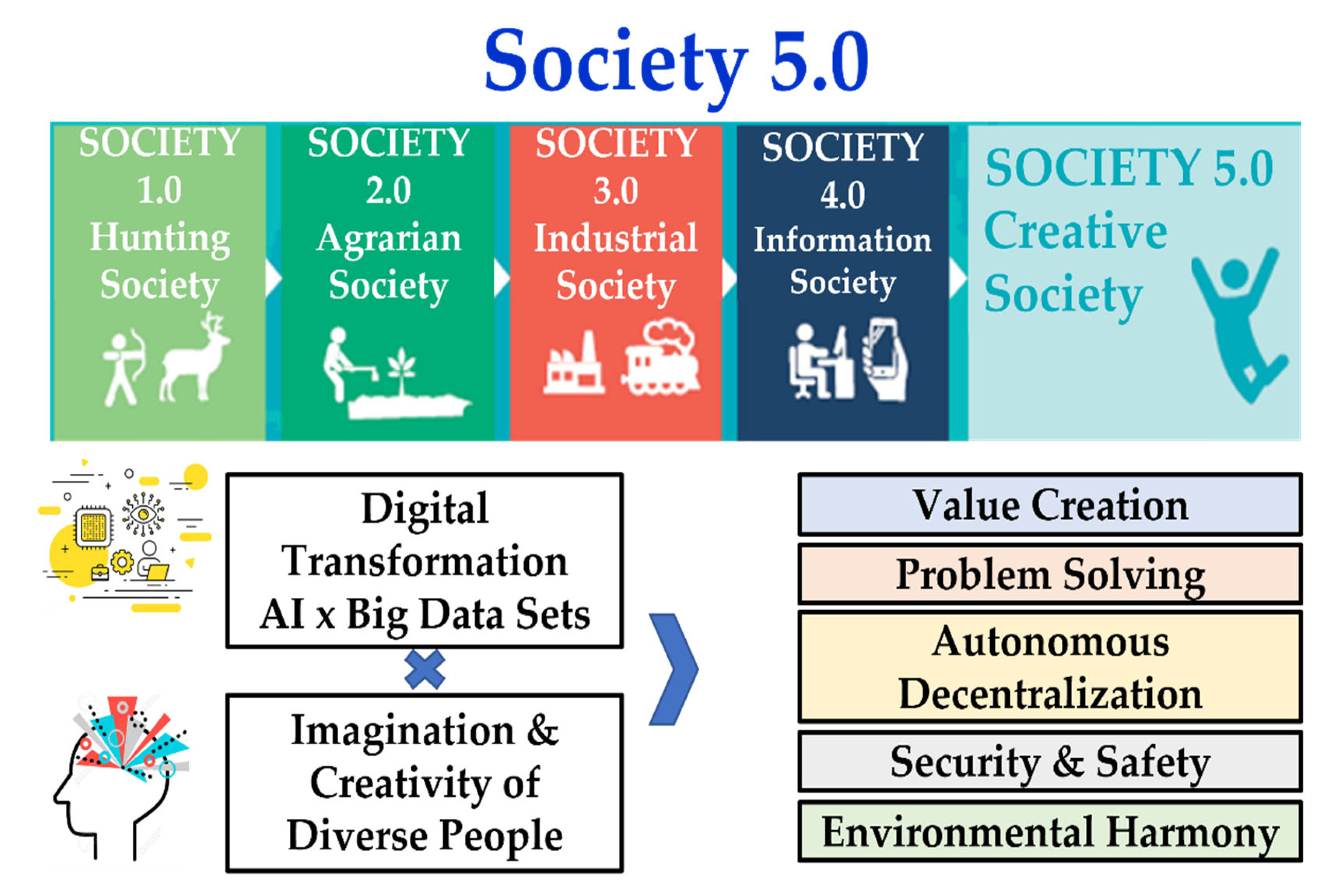
Figure 5. Evolution of society—Co-creating the future (adapted from [34]).
8. From Society 4.0 to Society 5.0
In contrast to Society 4.0, Society 5.0 is distinguished by value creation and problem solving, diversity, decentralization, resilience, sustainability, and environmental harmony, which are illustrated in Figure 6. Society 5.0 can be viewed as a human-centered Industry 4.0 environment. The Cabinet Office of Japan, from which the concept of Society 5.0 arose, defines it as “a human-centered society that balances economic advancement with the resolution of social problems through a system that highly integrates cyberspace and physical space”. Digital technologies and data should be used to foster a society in which people live diverse lives and pursue happiness in their own unique ways [34]. Additionally, people in Society 5.0 will be free of various constraints that previous incarnations, up until Society 4.0, were unable to overcome, and will be able to pursue diverse lifestyles and values. More specifically, people will be liberated from the focus on efficiency. Instead, the focus will be on meeting individual needs, solving problems, and creating value. People will be able to live, learn, and work free of suppressive influences on individuality, such as gender, race, nationality, as well as alienation due to their values and ways of thinking. In addition to to that, people will be released from the disparities caused by the concentration of wealth and information, and anyone will be able to find opportunities to participate at any time and from any location. Another aim of the transition from Society 4.0 to Society 5.0 is to eliminate the fear of terrorism, natural disasters, and cyberattacks, and to be able to live in peace thanks to strengthened safety nets for unemployment and poverty. Finally, as per the WEF Annual meeting in 2019, the goal is to create a society in which anyone can create value at any time and from any location, in safety and harmony with nature, and free of the various constraints that exist today [35].
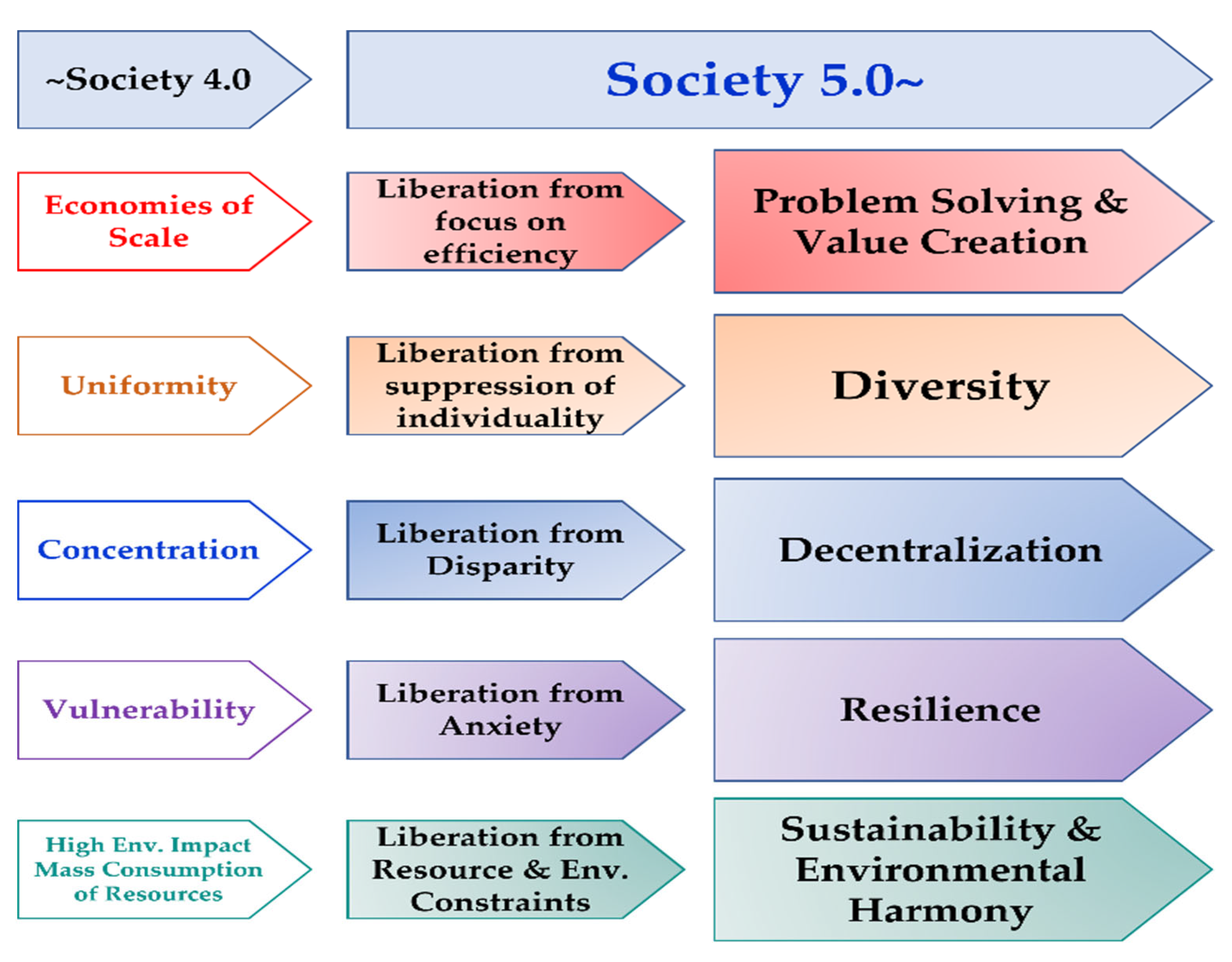
Figure 6. Changes from Society 4.0 to 5.0.
References
- Mourtzis, D. Challenges and future perspectives for the life cycle of manufacturing networks in the mass customisation era. Logist. Res. 2016, 9, 2.
- ElMaraghy, H.; Monostori, L.; Schuh, G.; ElMaraghy, W. Evolution and future of manufacturing systems. CIRP Ann. 2021, 70, 635–658.
- Rüßmann, M.; Lorenz, M.; Gerbert, P.; Waldner, M.; Justus, J.; Engel, P.; Harnisch, M. Industry 4.0: The Future of Productivity and Growth in Manufacturing Industries. Boston Consult. Group 2015, 9, 54–89.
- Xu, X.; Lu, Y.; Vogel-Heuser, B.; Wang, L. Industry 4.0 and Industry 5.0—Inception, conception and perception. J. Manuf. Syst. 2021, 61, 530–535.
- European Commission; Directorate-General for Research and Innovation; Breque, M.; de Nul, L.; Petridis, A. Industry 5.0: Towards a Sustainable, Human-Centric and Resilient European Industry; Publications Office: Luxembourg, 2021.
- Number of Social Media Users Worldwide from 2018 to 2027. Available online: https://www.statista.com/statistics/278414/number-of-worldwide-social-network-users/ (accessed on 15 June 2022).
- Mourtzis, D. (Ed.) Design and Operation of Production Networks for Mass Personalization in the Era of Cloud Technology, 1st ed.; Elsevier: Amsterdam, The Netherlands, 2022.
- Nahavandi, S. Industry 5.0—A Human-Centric Solution. Sustainability 2019, 11, 4371.
- Mourtzis, D. Towards the 5th Industrial Revolution: A literature review and a framework for Process Optimization Based on Big Data Analytics and Semantics. J. Mach. Eng. 2021, 21, 5–39.
- Harayama, Y.; Fukuyama, M. Society 5.0: Aiming for a New Human-Centered Society Japan’s Science and Technology Policies for Addressing Global Social Challenges. 2017. Available online: https://www.hitachi.com/rev/archive/2017/r2017_06/trends/index.html (accessed on 15 June 2022).
- Shiroishi, Y.; Uchiyama, K.; Suzuki, N. Society 5.0: For Human Security and Well-Being. Computer 2018, 51, 91–95.
- Ferreira, C.M.; Serpa, S. Society 5.0 and Social Development: Contributions to a Discussion. Manag. Organ. Stud. 2018, 5, 26.
- Makridakis, S. The forthcoming Artificial Intelligence (AI) revolution: Its impact on society and firms. Futures 2017, 90, 46–60.
- Mourtzis, D.; Angelopoulos, J.; Panopoulos, N. Chapter 2—Digital Manufacturing: The evolution of traditional manufacturing toward an automated and interoperable Smart Manufacturing Ecosystem. In The Digital Supply Chain; MacCarthy, B.L., Ivanov, D., Eds.; Elsevier: Amsterdam, The Netherlands, 2022; pp. 27–45.
- Rada, M. INDUSTRY 5.0 Definition. Available online: https://michael-rada.medium.com/industry-5-0-definition-6a2f9922dc48 (accessed on 21 January 2018).
- Friedman, B.; Hendry, D.G. Value Sensitive Design: Shaping Technology with Moral Imagination; Mit Press: Cambridge, MA, USA, 2019.
- Koch, P.J.; van Amstel, M.K.; Dębska, P.; Thormann, M.A.; Tetzlaff, A.J.; Bøgh, S.; Chrysostomou, D. A Skill-based Robot Co-worker for Industrial Maintenance Tasks. Procedia Manuf. 2017, 11, 83–90.
- Cabinet Office Society 5.0. Available online: https://www8.cao.go.jp/cstp/english/society5_0/index.html (accessed on 7 June 2022).
- Granrath, L. Japan’s Society 5.0: Going Beyond Industry 4.0. Available online: https://www.japanindustrynews.com/2017/08/japans-society-5-0-going-beyond-industry-4-0/ (accessed on 29 August 2017).
- Serpa, S. Society 5.0. Available online: https://encyclopedia.pub/entry/123 (accessed on 30 October 2020).
- Deguchi, A.; Hirai, C.; Matsuoka, H.; Nakano, T.; Oshima, K.; Tai, M.; Tani, S. What Is Society 5.0? In Society 5.0: A People-Centric Super-Smart Society; Springer: Singapore, 2020; pp. 1–23.
- Rojas, C.N.; Peñafiel, G.A.A.; Buitrago, D.F.L.; Romero, C.A.T. Society 5.0: A Japanese Concept for a Superintelligent Society. Sustainability 2021, 13, 6567.
- Mourtzis, D.; Angelopoulos, J.; Panopoulos, N. From Industry4.0 to Society4.0: Identifying Challenges and Opportunities. 2019. Available online: http://www.scopus.com/inward/record.url?eid=2-s2.0-85079490454&partnerID=MN8TOARS (accessed on 5 June 2022).
- Mourtzis, D. Development of Skills and Competences in Manufacturing Towards Education 4.0: A Teaching Factory Approach. In Proceedings of the 3rd International Conference on the Industry 4.0 Model for Advanced Manufacturing, Belgrade, Serbia, 5–7 June 2018; pp. 194–210.
- Onday, O. Japan’s Society 5.0: Going Beyond Industry 4.0. Bus. Econ. J. 2019, 10, 1000389.
- United Nations Do you Know All 17 SDGs? Available online: https://sdgs.un.org/goals (accessed on 10 June 2022).
- B20 Tokyo 2019 Society 5.0 for SDGs. Mar. 2019. Available online: http://www.b20tokyo.org/ (accessed on 13 June 2022).
- Mamasioulas, A.; Mourtzis, D.; Chryssolouris, G. A manufacturing innovation overview: Concepts, models and metrics. Int. J. Comput. Integr. Manuf. 2020, 33, 769–791.
- Mourtzis, D.; Angelopoulos, J.; Panopoulos, N. Smart Manufacturing and Tactile Internet Based on 5G in Industry 4.0: Challenges, Applications and New Trends. Electronics 2021, 10, 3175.
- Mourtzis, D. Simulation in the design and operation of manufacturing systems: State of the art and new trends. Int. J. Prod. Res. 2020, 58, 1927–1949.
- Keidanren. Digital Transformation—Opening up the Future through Co-creation of Values. Available online: https://www.keidanren.or.jp/en/policy/2020/038.html (accessed on 19 May 2020).
- Nagasato, Y.; Yoshimura, T.; Shinozaki, R. Realizing Society 5.0 Expectations from Japanese Business. J. Inf. Manag. 2018, 38, 3–8.
- Keidanren. Toward Realization of the New Economy and Society—Reform of the Economy and Society by the Deepening of ‘Society 5.0’. Available online: https://www.keidanren.or.jp/en/policy/2016/029.html (accessed on 19 April 2016).
- Keidanren. Society 5.0—Co-Creating the Future. Available online: https://www.keidanren.or.jp/en/policy/2018/095.html (accessed on 13 November 2018).
- Nakanishi, H. Modern Society has Reached Its Limits. Society 5.0 Will Liberate Us. Available online: https://www.weforum.org/agenda/2019/01/modern-society-has-reached-its-limits-society-5-0-will-liberate-us/ (accessed on 19 January 2019).
More
Information
Subjects:
Engineering, Manufacturing
Contributors
MDPI registered users' name will be linked to their SciProfiles pages. To register with us, please refer to https://encyclopedia.pub/register
:
View Times:
12.5K
Revisions:
2 times
(View History)
Update Date:
07 Sep 2022
Notice
You are not a member of the advisory board for this topic. If you want to update advisory board member profile, please contact office@encyclopedia.pub.
OK
Confirm
Only members of the Encyclopedia advisory board for this topic are allowed to note entries. Would you like to become an advisory board member of the Encyclopedia?
Yes
No
${ textCharacter }/${ maxCharacter }
Submit
Cancel
Back
Comments
${ item }
|
More
No more~
There is no comment~
${ textCharacter }/${ maxCharacter }
Submit
Cancel
${ selectedItem.replyTextCharacter }/${ selectedItem.replyMaxCharacter }
Submit
Cancel
Confirm
Are you sure to Delete?
Yes
No




